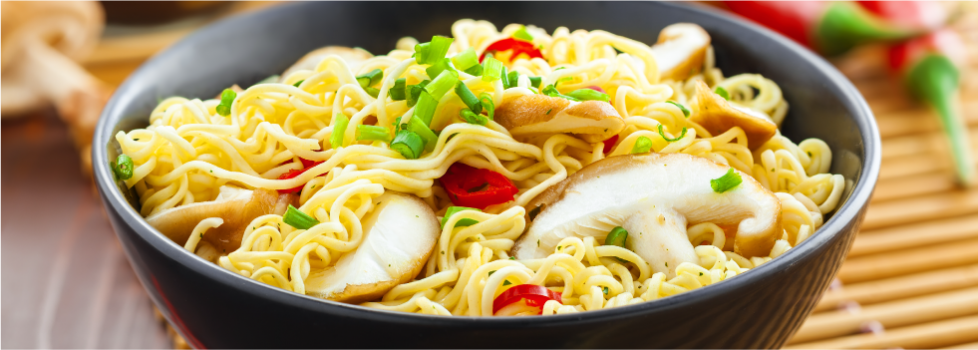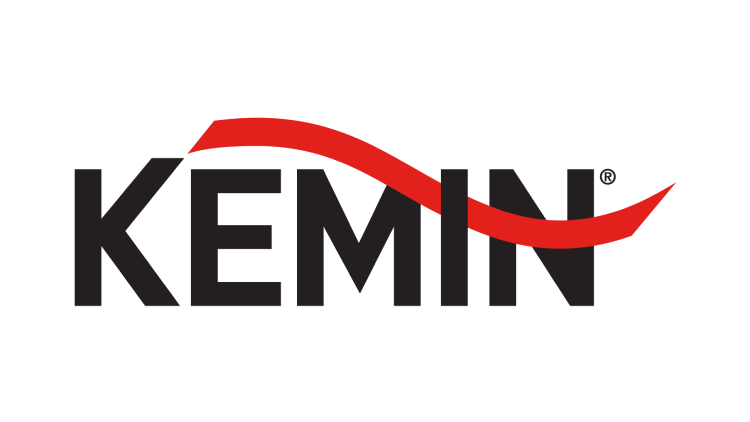Promotional Features
Instant noodles - from convenient necessity to indulging quality
From their creation in the late 1950s as a nutritional need for hungry war survivors, to busy people of today, instant noodles have developed into a food indulgence loved by individuals from all walks of life. The growing global demand for instant noodles is apparent. According to a survey by Research and Markets (2023), the instant noodle industry has increased significantly over time, with an anticipated worldwide market size of US$24.3 billion in 2022 and predicted to reach US$33 billion by 2030.1
Consumers today demand a higher quality product, and convenience is no longer seen as the primary source of purchase motivation in this consumer-driven market. The growing need for products with improved quality, mouthfeel, texture, and taste is one of the main factors behind this increase. As a result, manufacturers have improved the quality of their noodles by employing better ingredients and production techniques.
However, today’s health-conscious consumers are searching for better options, like air and freeze-dried noodles, which not only offer high nutrition and flavor but are also practical and simple to cook. This is particularly evident in North Asia, where 60% of Chinese consumers believe increasing health and immunity requires a balanced nutritional diet.2 According to Innova Market Insights (2023), indulgent and premiumization ranked fourth in the top 5 positionings for instant noodles with 2.5% in April 2022.3 In order to fulfil these trends, instant noodle manufacturers have been innovating and investing in research and development to create new and improved products.
Asian instant noodle taking global market by storm
As reported by The Korea Times in 2022, South Korea exported for $607.9 million of instant noodles from January to November, an increase of 10.6% from the corresponding time in 2020.4 Coupled with Latin America's record-high innovation and value growth for instant noodles with Asian flavors inspired by street food or regional traditional comfort food continues to grow (Innova Market Insights, 2023). Instant noodles require additional extended shelf life to meet the growing export demands, delaying oxidation and rancidity in transit.
Understanding ingredients and manufacturing processes
Ingredients play an essential part in achieving that desired texture and mouthfeel. A typical instant noodle cake contains wheat flour, oil, water, and salt, commonly known as Kansui. Research shows that high-quality noodle texture is typically characterized as firm, elastic, and chewy .5 As hard wheat is commonly grown in Asia, it does lead to a lower quality and noodle texture. Most instant noodle companies within this region cannot afford high-quality wheat from Canada and Australia due to cost. Hence, they can opt for quality improvement to enhance smoothness and the desired elastic texture for consumers looking for chewy, less sticky, and less soggy noodles.
Figure 1: Instant noodle ingredients
Most instant noodle manufacturers' standard processing flow starts with mixing, resting, sheeting, compounding, slitting, waving, and steaming. And depending on the final desired product, the steamed noodles cake can be fried, air-dried, or freeze-dried. Oil-fried noodles are inherently prone to oxidation as the absorbed oil leads to rancidity. While air-dried and freeze-dried noodles are healthier, they present stickiness issues when not coated with edible oil. These noodles will also stick to the mold in production, creating food waste and increasing manufacturing burdens.
Figure 2: Instant noodle processing flow
Revolutionising noodles to meet global demands
Kemin introduces the VALTEQ™ series, a unique line of quality improvers for instant noodle manufacturers. The liquid product line uses emulsifier solutions to increase consumers' overall instant noodle-eating experience by addressing some of the everyday challenges faced by noodle manufacturers.
Texture improver
VALTEQ™ T Liquid is a high-quality emulsifier system that improves noodle texture, providing consumers a sought-after bounce as well as a smoother and chewier mouthfeel. The innovative emulsifier system accelerates the hydration process of instant noodles, shortening the noodle soaking time. This solution can be directly applied to the Kansui as part of the mixing process. Research shows that VALTEQ™ T Liquid has similar performance than Sodium Tripolyphosphate (STPP) on parameters such as color, flavor, smoothness, and elasticity. Thus, can be used as an alternative to the highly regulated ingredient in certain countries.
Figure 3: VALTEQ™ T treated noodles have better elasticity allowing noodles manufacturers to achieve that desired bounce.
Noodle treated with VALTEQ™ T are Less Firm/ Softer, Chewier, More Elastic
Anti-stickiness technology
For instant noodle lovers around the world, the last thing we want is a bowl of sticky noodles. Non-fried instant noodles are known to be sticky. The texture of sticky noodles could be harder, and the appearance unpleasant. VALTEQ™ AS Liquid is an enhanced emulsifier protected with antioxidants preventing instant noodles from sticking together during consumption and production. A layer of emulsifiers is coated on the surface of the noodle, making each noodle strand less likely to stick together. Air- as well as freeze-dried noodles can be sprayed or dipped with VALTEQ™ AS Liquid to improve quality and overall eating experience during processing, cooking, and serving.
Figure 4: After four minutes of soaking in boiled water, noodles treated with VALTEQTM AS Liquid could be easily separated without lumps when compared to negative control and noodles treated with oil only. The texture of noodles treated with VALTEQTM AS Liquid is smoother and more elastic.
Noodle cake specialized antioxidant
The plant-derived antioxidant and emulsifier blend is an all-in-one solution that protect noodles from oxidative rancidity as well stickiness to the production mold, offering an all-round noodle protection system and overall better noodle quality. While most antioxidant used for fried instant noodles are applied to the frying oil, which act as a carry-on effect when absorb by the noodle, similarly to VALTEQ™ T solution, VALTEQ™ AO is directly included into the Kansui before adding into the noodle dough, allowing maximum absorption, higher oxidative stability, and better shelf-life protection.
Figure 5: VALTEQ™ AO is proven to be more effective in controlling oxidative rancidity compared to the untreated noodles.
Kemin focusses on solving customers’ problems and provides holistic solutions to the food industry. Its new VALTEQ™ Series provides better noodles by improving texture and oxidative stability. This means consumers get to enjoy quality noodles with a great taste experience and food manufacturer will gain better brand reputation.
Food manufacturers can also reduce waste through the anti-sticky function of our ingredients. This prevents noodle cakes from sticking to their molds, reducing waste and increasing user-friendliness. Hence, the new instant noodle solutions leads to more efficient production, enabling food manufacturers to produce a greater quantity of noodles, increase production efficiency and quality, thereby maximizing profits and satisfying consumers.
Author Darren Yap, Kemin Food Technologies Asia
References
1. Research and Markets. (2023) Instant Noodles: Global Strategic Business Report.
2. Li, Daisy. (2021) How Japanese Instant Noodles Ride The Health Trend [PowerPoint presentation]
3. Innova Database. (2023) Category Review: Instant Noodles [PowerPoint presentation]
4. The Korea Times. (2022) Instant noodle exports hit new high in first 11 months of 2021 amid pandemic, koreatimes. The Korea Times. Available at: https://www.koreatimes.co.kr/www/culture/2022/03/141_321971.html (Accessed: March 7, 2023).
5. Koh, W.Y.; Matanjun, P.; Lim, X.X.; Kobun, R. (2022) Sensory, Physicochemical, and Cooking Qualities of Instant Noodles Incorporated with Red Seaweed (Eucheuma denticulatum). Foods 2022, 11, 2669. https://doi.org/10.3390/ foods11172669









